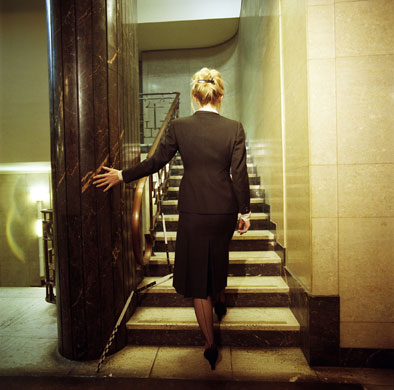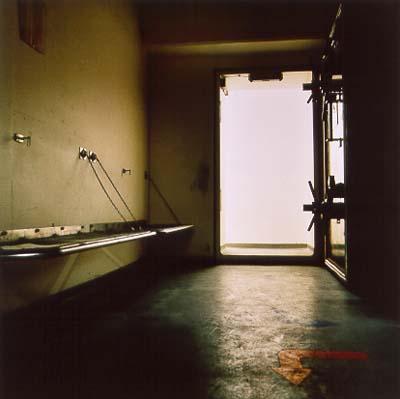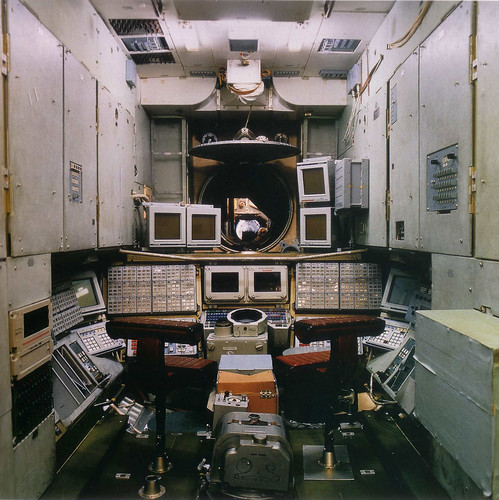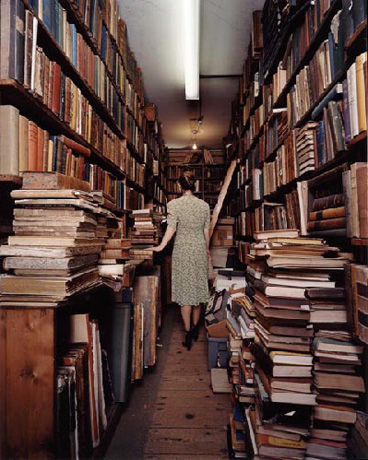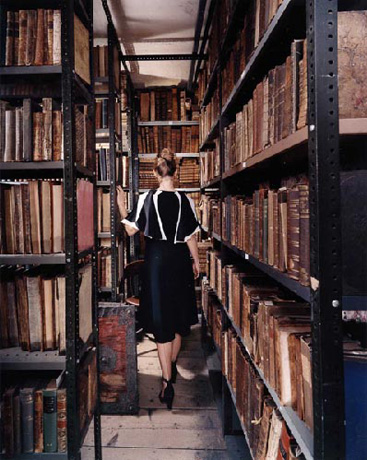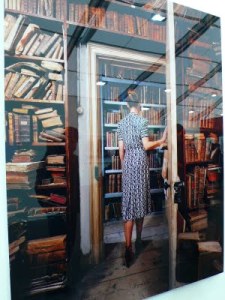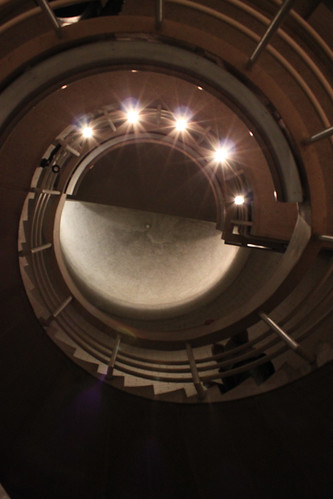I read the book ‘Film and video art’ by Tate publishing in order to find more moving image artists who share my themes and concerns. The book surveys moving image art from early cinema to today’s digital moving image, which enabled me to isolate certain themes and genres that creep back in different cultural and technological contexts.
The book surveys avant guarde cinema close to Surrealism, for example the films of Germaine Dulaine and Man Rays’s Le mystère du chateau de Dé, where the camera tracks at low level through the empty rooms of a modernist house, anticipating contemporary works dealing with space and emptiness. I have already written about these artists when I surveyed photography and cinema within Surrealism.
[youtube http://www.youtube.com/watch?v=OpPC87i7nv0&w=425&h=349]
In the 1940s, a new wave of avant garde cinema reappropriated the Surrealist idea of the importance of subjective vision in film. Filmmakers in this tradition are Maya Deren, Kenneth Anger, Stan Brakhage, Hollis Frampton. Critic A.L. Rees coins the term ‘psychodrama’ to describe their works that deal with inner life and conflict, and suggest their air of menace and obsssession may be linked to the cold war climate of paranoia which also influenced the film noir genre.
In Maya Deren Meshes of the Afternoon (1943), a woman chases a cloaked figure that may or may not represent the temptation of suicide in successive sequences that blur chronology and geography.
[youtube http://www.youtube.com/watch?v=4S03Aw5HULU&w=425&h=349]
Kenneth Anger’s Fireworks (1947) is one the first films ever to have an explicit gay theme: a sleeper awakes to be tormented and and torn apart by mocking sailors, but is reborn in a flow of light and balm to find himself back in bed but no longer alone. The theme reminds me of the old myths of the vegetation Gods (Dyonisos) who suffered ritual sacrifice to be reborn.
(Warning: the following short film contains nudity. Click the embedded player at your own risk.)
[youtube http://www.youtube.com/watch?v=iDu7mbcGqGY&w=560&h=349]
Kenneth Anger later made another film dealing with ritual sacrifice: Inauguration of the Pleasure Dome (1954-6).
[youtube http://www.youtube.com/watch?v=34sfF1t82oM&w=425&h=349]
‘Fireworks’ and other films depicting dreams are sometimes referred to as ‘trance films’. The term “trance-film” is taken from P. Adams Sitney, whose book ‘Visionary Film: The American Avant-Garde’ (Oxford: Oxford University Press, 2002) has become the bible of American avant-garde film history.
Sidney Peterson’s The lead shoes (1949) deals with Oedipal themes.
http://www.dailymotion.com/embed/video/xe7579
The Lead Shoes (1949) by Lost_Shangri_La_Horizon
Stan Brakhage, a young student of Maya Deren, investigated wish-dreams vs. reality in his films. I liked the light play in ‘Cat’s Cradle’ (1959)
[youtube http://www.youtube.com/watch?v=Cur2P5Ym3Yw&w=425&h=349]
Bruce Baillie’s ‘Castro Street’ (1966) is a non narrative film made of footage of urban landscape and industrial spaces.
[youtube http://www.youtube.com/watch?v=UPhu7Qdp3pQ&w=425&h=349]
During the 60’s, experimental cinema moved towards formal abstraction. In the late 1970’s however, some film makers moved back to exploring the subjective. The best known are Patrick Keiller (now famous for dealing with psychogeography in his films), and Derek Jarman and the ‘new romantics filmmakers’ (including Cerith Wyn-Evans and John Maybury).
The 70’s marked the beginning of a stronger separation between experimental film makers and gallery based video artists. The two traditions of work became very distinct, with gallery based video art tending back then to be non narrative.
However, some works explore the boundary between the real and the dreamlike, for example Robert Whitman ‘Prune flat’ where two performers merge with the images projected onto them and the background.

The ‘Psychodrama’ genre in experimental moving image picked up in the 90s.
The works of Canadian artist Stan Douglas deals with the uncanny, the urban space and memory.
‘The Sandman’ (1995) shows two loops filmed at allotments in Potsdam in former East Berlin, while on the soundtrack, someone reads an adapted version of E.T.A. Hoffman’s ‘The Sandmann’ that inspired Freud’s essay ‘The Uncanny’.
‘Le Detroit’ also uses 2 loops, one projected in negative, the other in positive. It shows a black woman wandering through an abandoned house, looking at abandoned possessions. ‘Le detroit’ makes references to Shirley Jackson’s 1959 horror novel ‘The Haunting of Hill House’ and Marie Hamlin’s 1883 chronicle ‘Legends of Le Détroit’ (Le detroit being a French name for the city of Detroit, MI). The video uses the conventions of the horror film to comment on the decline of urban neighbourhoods in Detroit, and the problems of racial tensions in this city.

Isaac Julien and Sunil Gupta ‘Looking for Langston: Homage Noir’ (1989) mixes archive footage, dream sequences and staged photographs to talk about American Black Gay poet Langston Hughes and the cultural renaissance of Harlem.
[youtube http://www.youtube.com/watch?v=2bxffsPF4F0&w=425&h=349]
Matthew Buckingham’s film installation ‘A Man of the Crowd’ (2003) is based on the story by Edgar Allan Poe that influenced Baudelaire’s concept of the Flâneur. The camera follows a man wandering through the streets of Vienna, and shows reflections in cafes and store windows while the viewer themselves is reflected on the glass used to make the installation, thus questioning reality and illusion in everyday life.

Catherine Sullivan explores theatricality and social conventions. Her work is insprired by film noir and avant-garde cinema. In ‘The Chittendens’ (2005), a six screen video installation, actors in period costumes perform gestures that symbolise different social attitudes or psychological mindsets. Most of the video was shot in an abandoned Post Office in Chicago. The work reflects on property, insecurity, the act of performance in everyday life and hysteria.

Judith Barry’s ‘Ars Memoriae Carnegiensis’ reinvents the Renaissance concept of ‘memory theatre’, that is, a mental process where a person maps memories to the physical space of a building filled with symbolic objects (and also the drawing or painting of the resulting imaginary space).
In Doug Aitken’s video installation ‘Electric Earth’ (1999) shows a black man wandering the streets and parking lots of Los Angeles by night. The installation is immersive: the viewer is invited to physically moves through the spaces delimited by the several screens, while the sound design gives a unity to the different visuals. The immersive quality invites the viewer to share the protagonist’s feeling of urban alienation.
[youtube http://www.youtube.com/watch?v=LSziysd2Duk&w=560&h=349]
In 2006, Aitken produced ‘Broken Screen: 26 Conversations with Doug Aitken’ (Distributed Art Publishers, 2006), a book of interviews with twenty-six artists who aim to explore and challenge the conventions of linear narrative. Interviews included Robert Altman, Claire Denis, Werner Herzog, Rem Koolhaas, Kenneth Anger and others. It seems this book cross references both artists that I found while doing this research, and filmmakers that I like such as Herzog, so it may be worth checking it out.
Irish artist Willie Doherty also uses installations to create feelings of physical unease and psychological paranoia. Ghost Story (2007) shows how the landscape of the North of Ireland is haunted by the traumatic events that took place there. The camera moves down a road, never reaching any destination, while a man (actor Stephen Rea) narrates in voice-over horrible events that he witnessed. However, no pshysical trace of these events are visible on the onscreen visuals, it is just an empty landscape. The land is scarred psychologically, but not visibly.
[youtube http://www.youtube.com/watch?v=ee_7ZS1vhnA&w=425&h=349]
Kutlug Ataman’s five-screen video installation ‘Stefan’s Room’ (2004) is a psychological study of obssession and an individual’s relation to their private space. On one screen, a young German man, Stephan, discusses in detail his passion for moths which he both breeds and collects. The other screens show close-ups of insects, either live specimen crawling quietly on Stephan’s arms and hands, or his collection of dead specimen on display in his appartment.

Douglas Gordon uses the screen and formal cinematic conventions to explore psychological instability. In a show ‘what have i done’ at the Hayward Gallery in 2003, he used mirrors reflecting his screen based work to create illusions of spatial confusion in the viewer. Because he is is interested in the formal conventions of cinema, he often uses found footage, most notably in ’24 hour psycho’ (about which I had already talked in a previous blog post) where he slows down Hitchcock’s ‘Psycho’ to last 24 hours. However, a newer piece ‘Fog’ (2002) uses original footage. Inspired by a 19th-century Scottish novel by James Hogg, ‘The Private Memoirs and Confessions of a Justified Sinner’ (1824) where a man meets his double, who really is the Devil and convinces him to commit crimes, ‘Fog’ shows a man looking at his own shadow. The image is repeated on the other side of the screen, deliberately out of synch, so that at times the man is looking at himself looking at his shadow. The theme of the double is also present in ‘Self-portrait’ (1994) where the artist confronts his reflection. The video is shown as a negative image so as to question issues of reality and illusions. In Douglas Gordon’s own words, ‘The negative image indicates a flip-side of our reality, and so everything we know is turned upside down / inside out. What is the reverse side of self-reflection? What is the opposite of truth?’
I found my own video work to be very close to these works which use the aesthetic conventions of fiction, such as horror, noir or other genre movies or dream sequences, to talk about social concerns without formally resorting to the traditional documentary style. I like the aura of moral and philosophical ambiguity that blurring the lines of documentary and fiction gives to a moving image work.





